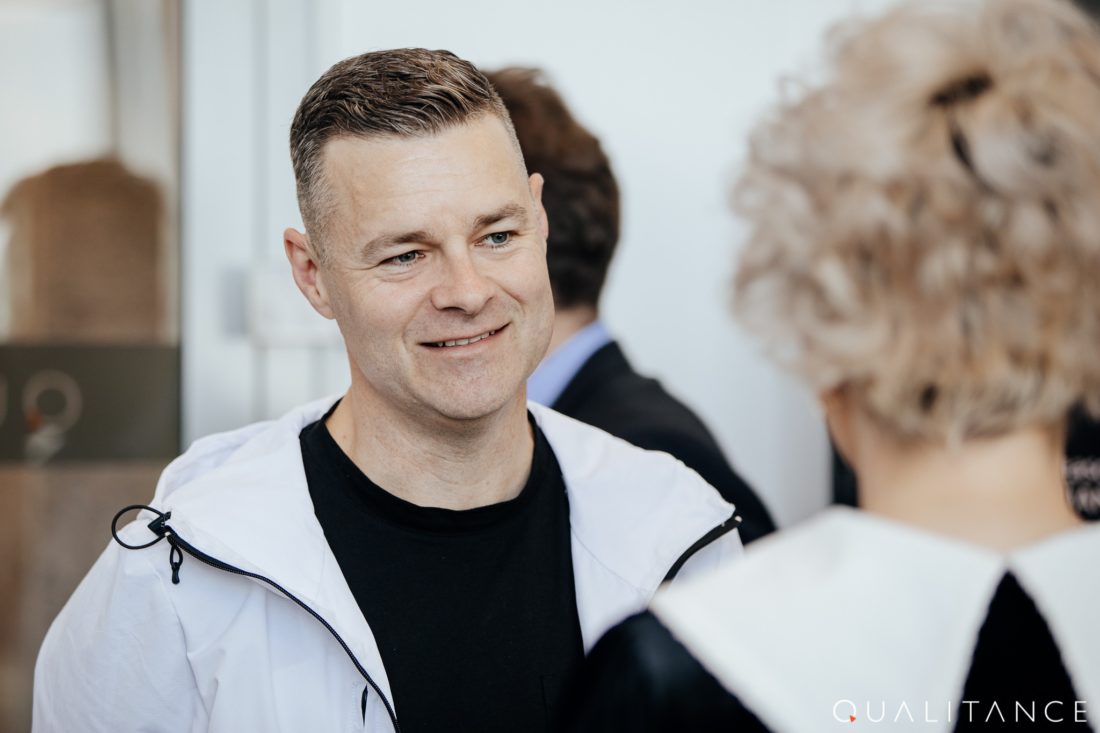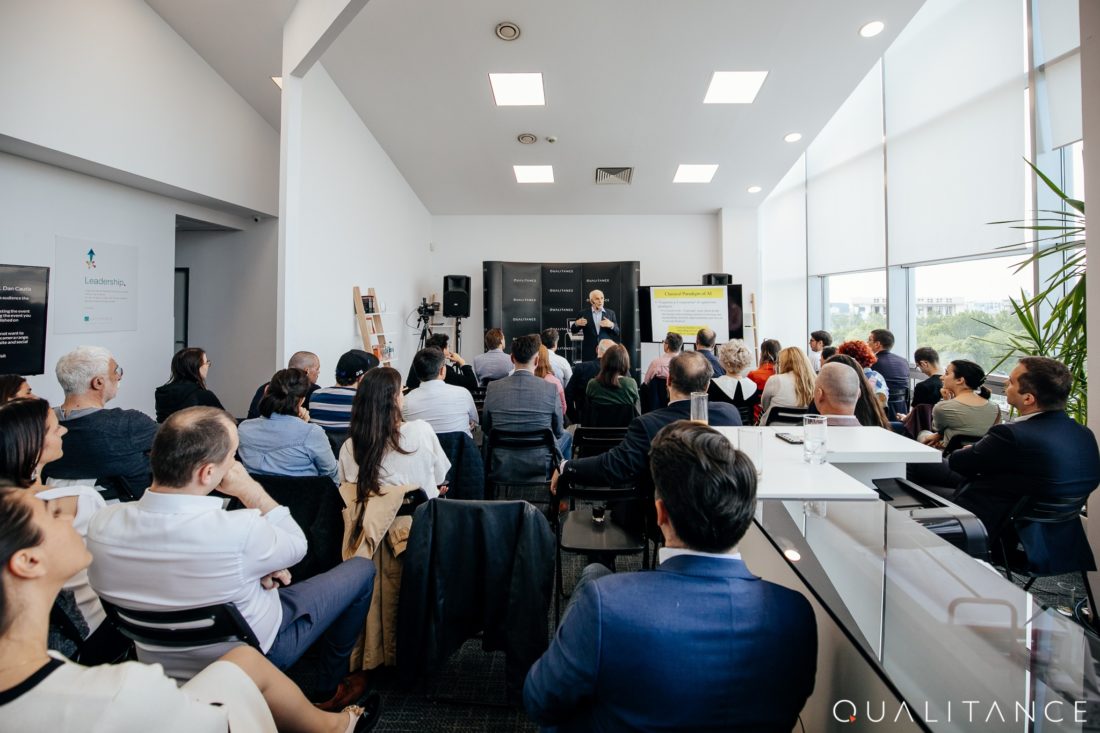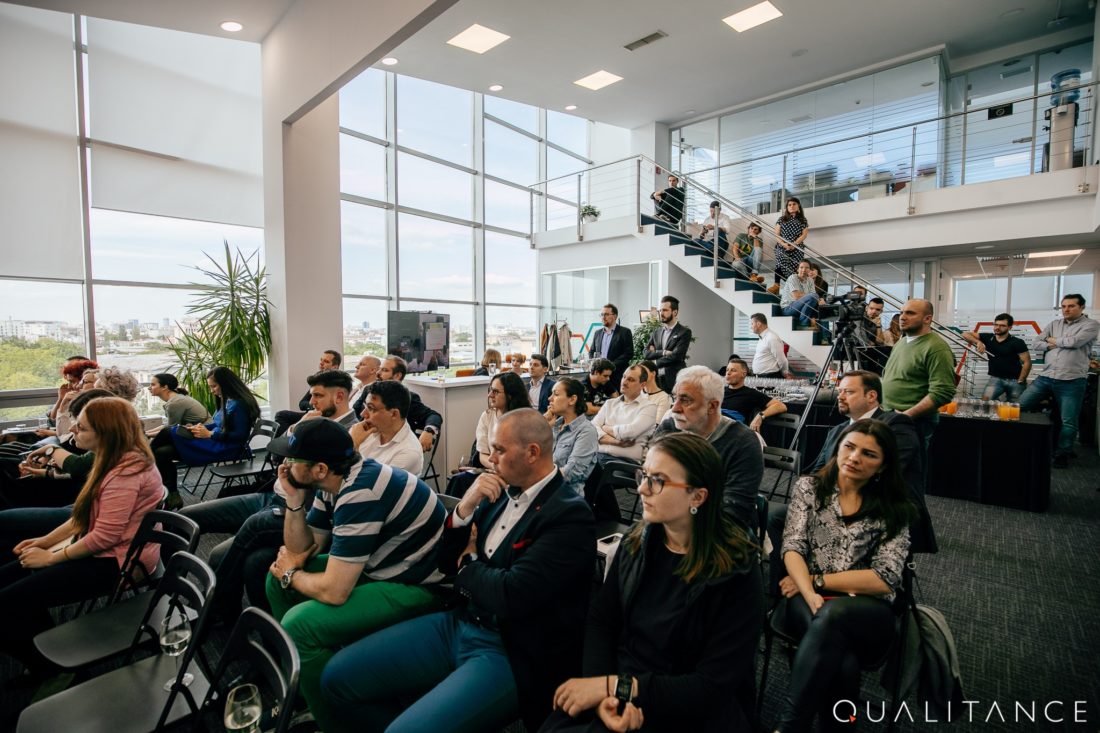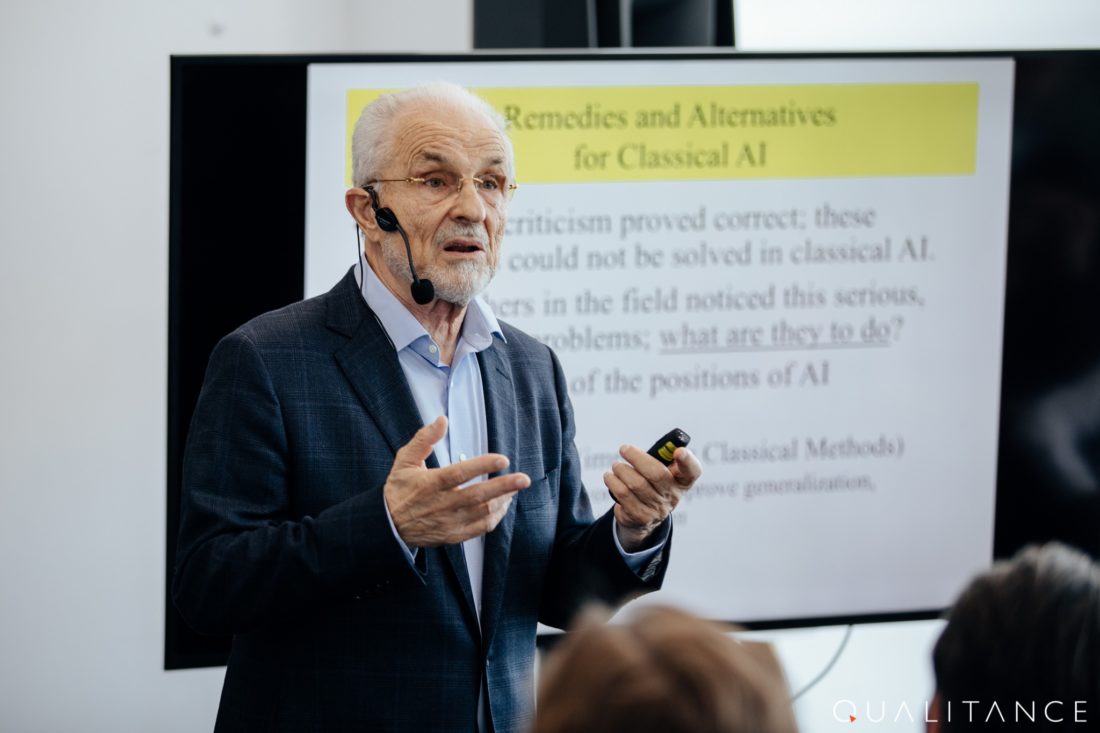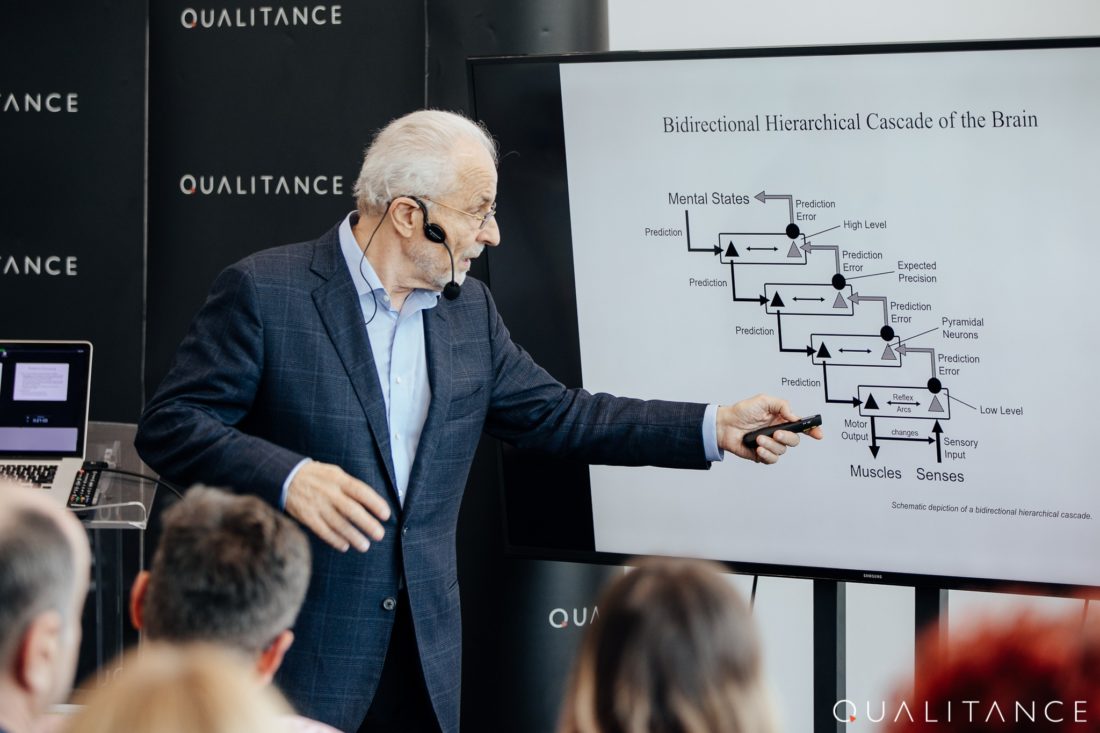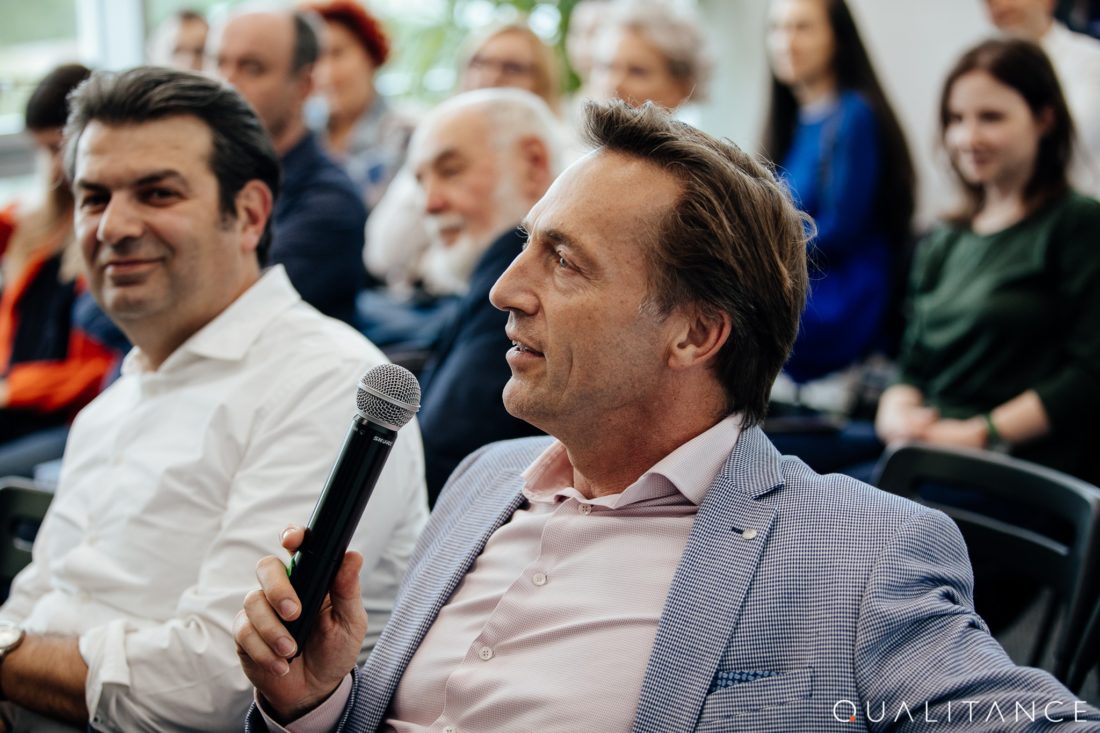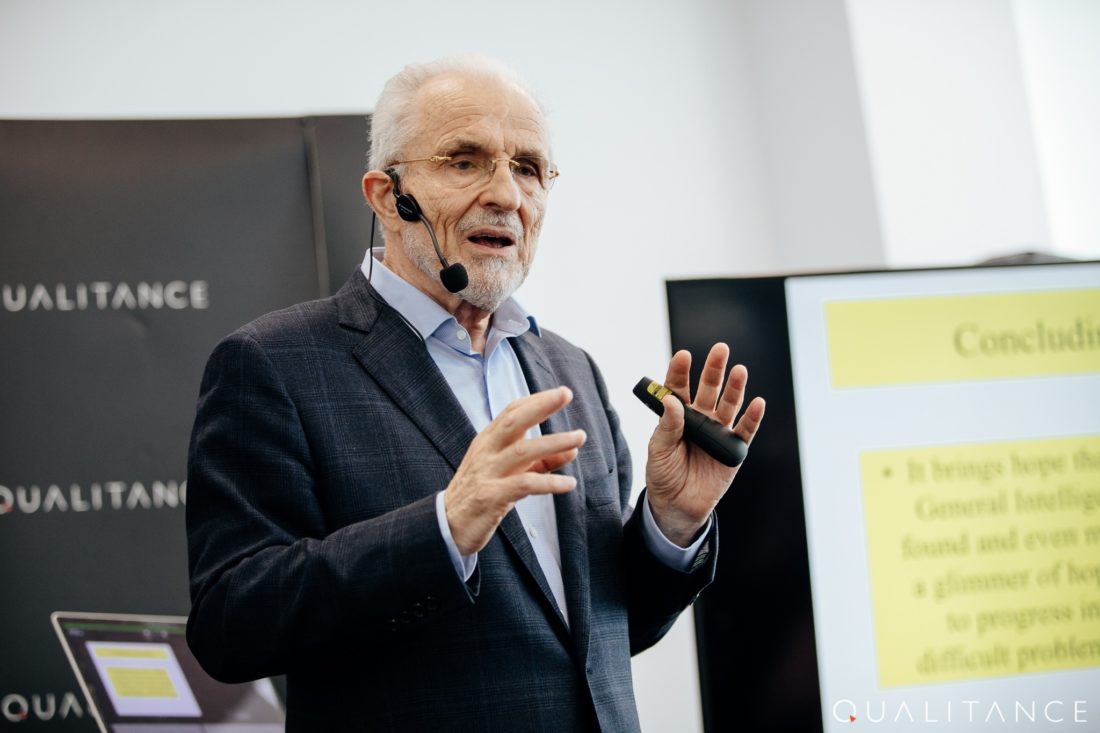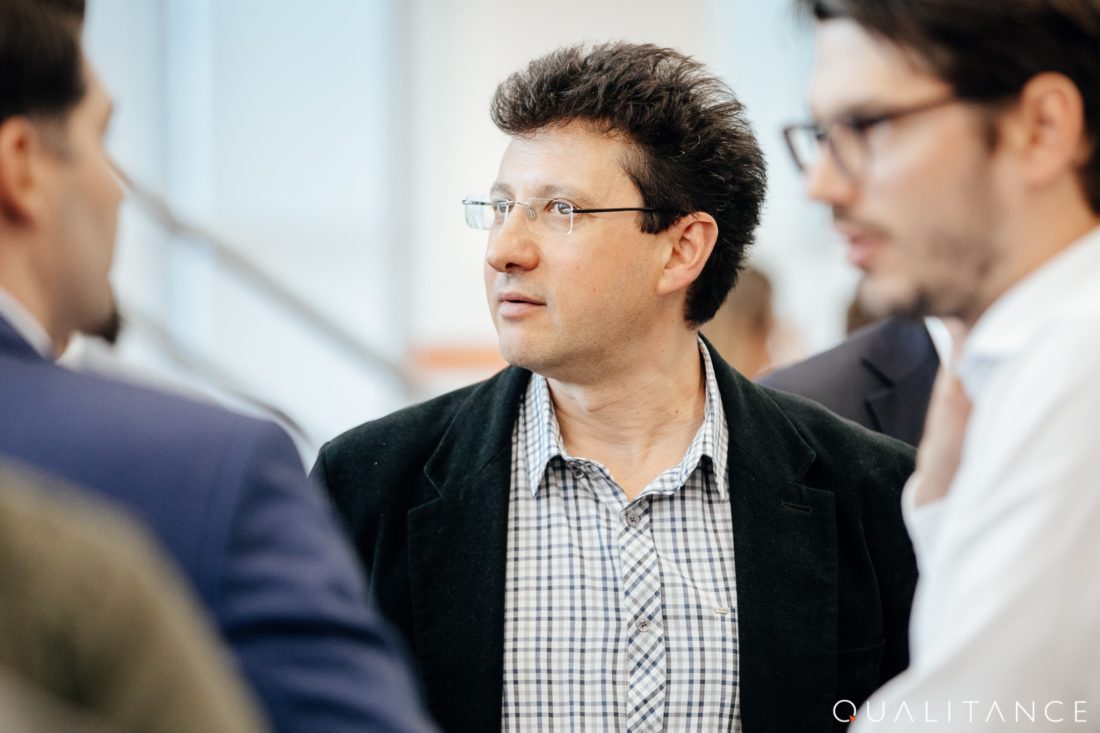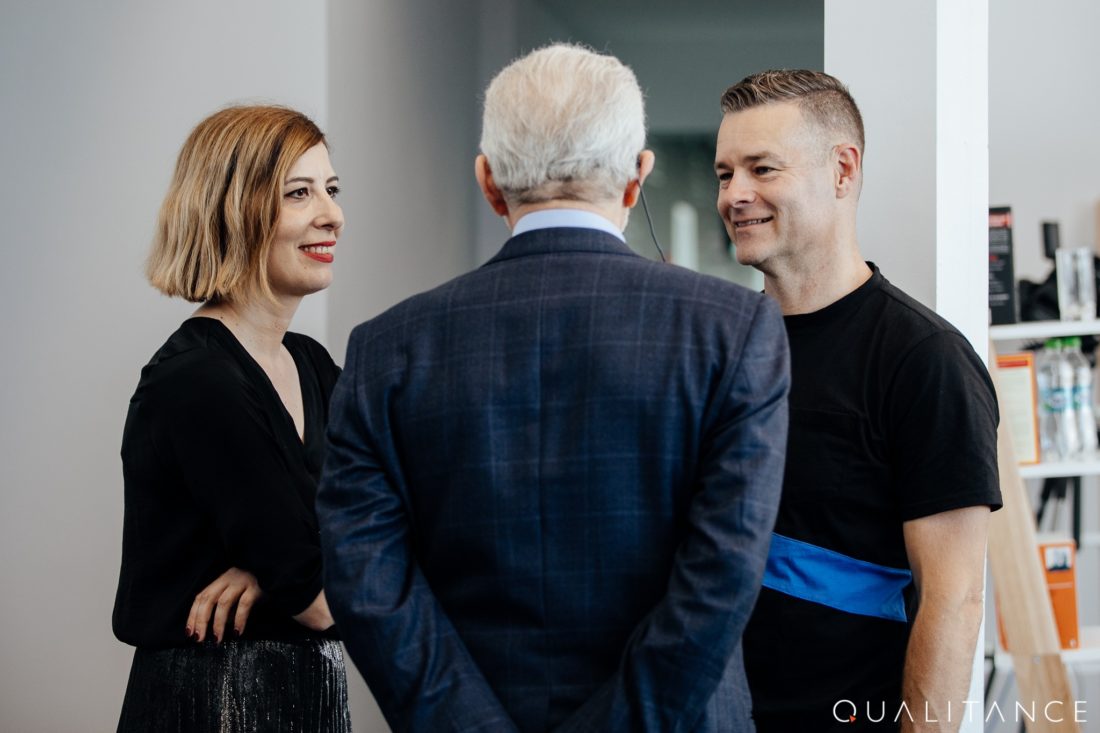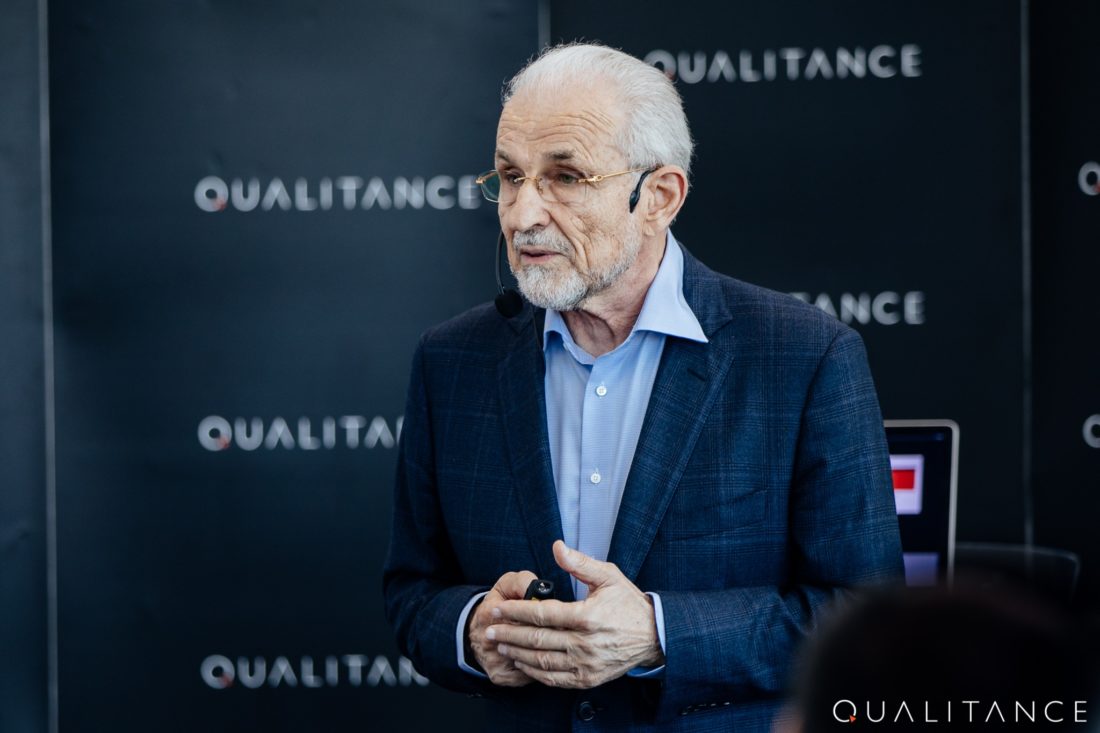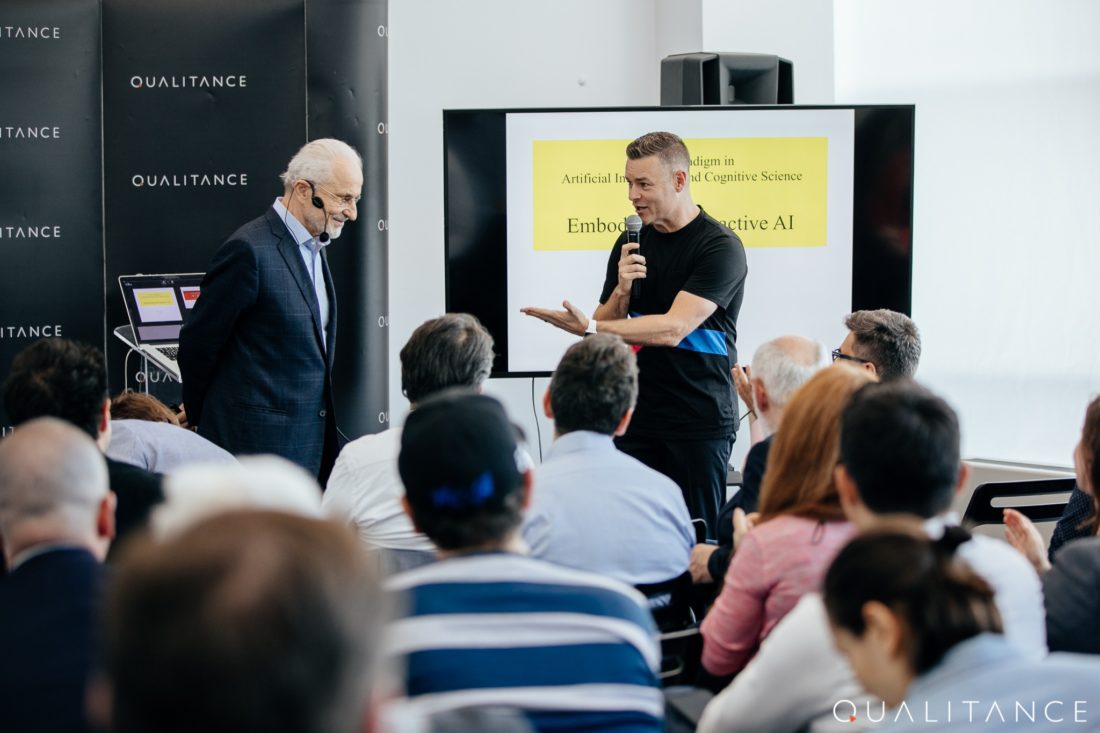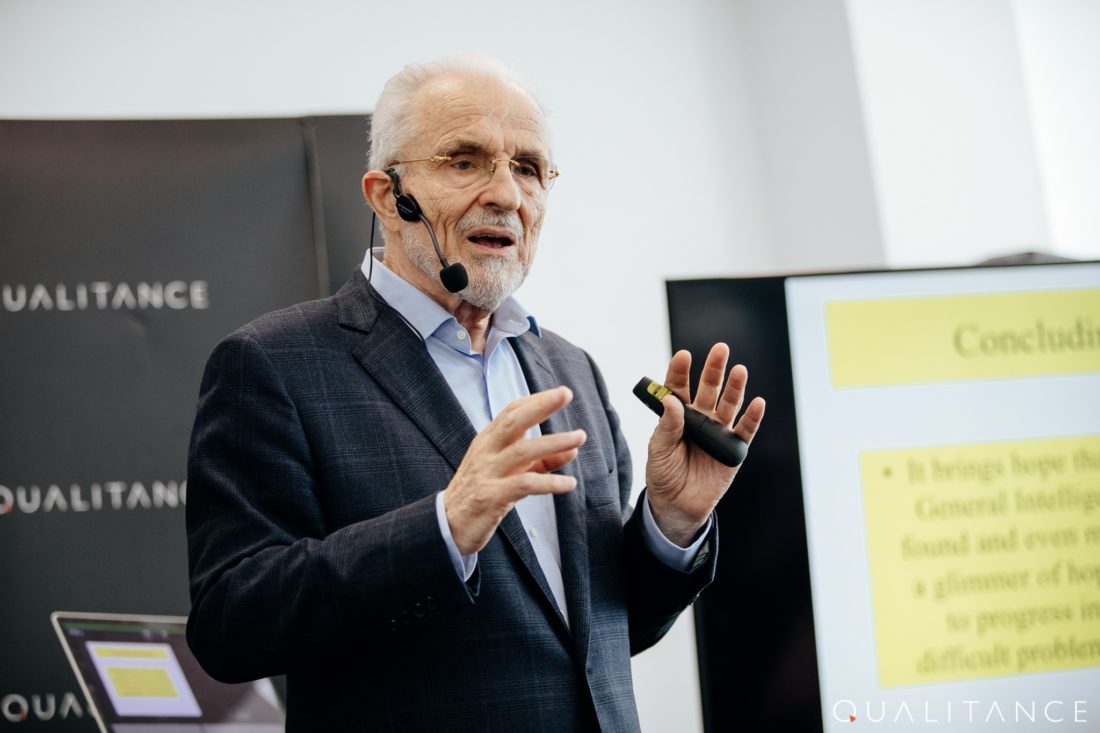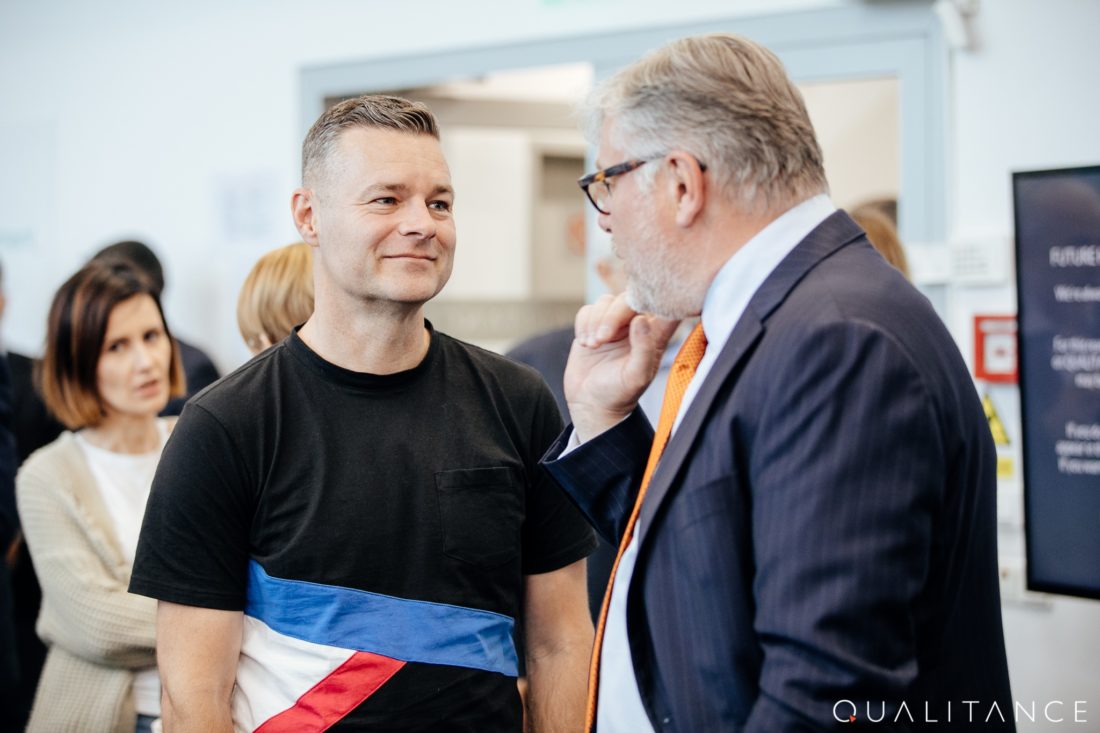Following our “Artificial Intelligence from Hype to Reality” video series, Professor Dan Cautis from Georgetown University took the stage at QUALITANCE HQ for an exciting talk on Embodied and Enactive AI.
On May 9th, at 5 pm Prof. Dan Cautis shared insights on what lies ahead for businesses, societies, and individuals. The discussion revolved around why disembodied AI is still far from living up to the promise of its promoters and how this radical, embodied, enactive approach will open a new era in Artificial Intelligence.
Key takeaways
- Why the early AI predictions did not become reality;
- The downside of ignoring philosophical approaches to AI;
- The salient features of embodied and enactive AI;
- How embodied and enactive AI will help us design truly autonomous artificial agents;
- Cutting-edge developments: The Bayesian Brain Hypothesis (BBH), The Free Energy Principle (FEP) & The Action Inference Framework (AIF).
Want to see how it went? Check out the photo gallery!
Abstract
Artificial Intelligence, one of the most amazing intellectual developments of all time, keeps bringing to the public attention new discoveries and applications at an incredible rate.
From the multitude of intelligent robots, state-of-the-art software that translates between languages, recognizes faces, songs and speech to self-driving vehicles and more, AI brings a bonanza of benefits in our everyday life. However, it has been beset by a propensity for hype, rarely seen in other domains, that started right from its beginnings.
Back in the 70s, early luminaries in the field like Marvin Minsky were not shy of predicting that “in from three to eight years we will have a machine with the general intelligence of an average human being.” We are still far from this achievement and, in this presentation, we will analyze the reasons why the prediction did not happen.
There are quite a few of them, but one of the most important was that the founders of AI, who were remarkable creative scientists, were nevertheless wrong. Not in their scientific approach, but to their chagrin, in their philosophical approach.
Hubert Dreyfus, their colleague from the philosophy department, brought on a valid and powerful critique, but they were dismissive and continued to promote a disembodied Cartesian approach that eventually proved to be a dead end.
Fortunately, Dreyfus’s vision, based on an embodied and enactive approach to cognition as developed in the works of Heidegger and Merleau-Ponty, became acknowledged and adopted in the last few decades. This new paradigm allowed significant progress in cognitive science and in the design of truly autonomous artificial agents.
FUTURE HORIZONS is a QUALITANCE series advocating emerging technologies that fuel innovation: Artificial Intelligence, IoT, Blockchain, Augmented Reality, Autonomous Vehicles, Facial Recognition.








